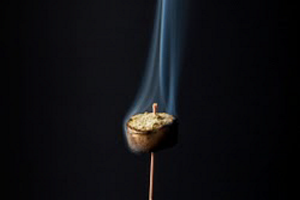Janet Lee
October 30, 2012
When you walk into an acupuncturist’s office, your practitioner starts diagnosing you with just a glance. Your skin tone, body weight and temperament all provide valuable information that can inform an acupuncturist about your body’s innate strengths and weaknesses. The first conclusion an acupuncturist often reaches about a patient regards their elemental type.
The elemental types relates to the five basic elements in Traditional Chinese Medicine (TCM) – fire, earth, metal, water and wood. All matter and phenomena are categorized under one of these types. The color green, for example, relates to wood, an element representing the liver and gallbladder. The direction south, for example, relates to the fire element. The emotion of grief relates to metal.
In terms of human beings, certain physical traits, health tendencies and personality types define each element .The metal element, for example relates to the lung and large Intestine. Allergies, asthma and constipation are thus metal problems. Knowing your elemental type not only gives you insight into your character, it also alerts you to natural strengths and weaknesses. It’s easier to safeguard your health and utilize your gifts if you know what they are.
Read on to discover your own unique elemental constitution:
Fire: Fire people are hard to miss. They’re vibrant, passionate and energetic. The magnetic fire type is a natural salesperson and leader. Their strength lies in the blood vessels. Soft and moist skin is the mark of a balanced fire person with strong circulation. If imbalanced, the fire type may have a flushed face, overheat easily, suffer from high or low blood pressure and experience insomnia. Although social interaction comes naturally to fire people, maintaining balance for them means embracing quiet time and avoiding overexertion.
Earth: Earth-dominant constitutions are the peacemakers in their families and social groups. These loyal and predictable people crave security. They tend to have strong muscles and sturdy body types. The people-pleasing earth person loves relationship harmony and companionship. In the extreme, earth types can be worriers and even obsessive. The earth element in TCM is associated with digestive organs. These organs also have an important role in fluid metabolism. Earth types, therefore, are prone to water retention and weight gain. Achieving emotional balance for the sociable earth type means cultivating independence and making peace with solitude.
Metal: Are you meticulous and well-organized? Do your friends and colleagues consider you a person of high principals? Are you strong-willed with a strong voice? Have people sometimes considered you distant or too formal? As the metal element is associated with the lung, sinuses and skin in TCM, metal people typically have strong lungs and smooth skin. With imbalance, they’re prone to dry coughs, dehydrated skin and nasal polyps. Balancing their meticulousness with passion and their self-control with spontaneity is good therapy for a metal person.
Water: Water types are more rounded in appearance than the angular wood types. They have strong physiques and intellects. They’re original thinkers and don’t mind being unconventional or independent. Water people are naturally introspective and lovers of ideas. The kidney and bladder corresponds to the water element in TCM terms. A balanced water person exhibits a steady strength, strong bones and efficient water metabolism. A tune-up is in order if a water type has fragile bones or edema. Water people may be perceived as distant or even tough. The self-contained water personality benefits from reaching out and making emotional connections with others.
Wood: Confident and ambitious wood types are hard workers. Wood people can be bold, direct and work well under pressure. When wood types are out of balance, they can be testy, confrontational or erratic. In TCM terms, the wood element corresponds to the liver, which is in charge of maintaining tendons and muscle tissue. A healthy wood person is slender, with strong muscles and erect posture. When they’re out of balance, wood types may have chronic muscle tension and unstable joints. Wood people, who are comfortable with power and exertion, can preserve their health by staying flexible and softening their intensity.
* * *





 As part of our commitment to your health, the Heritage Acupuncture blog will be featuring healthy recipes. This is designed to give you ideas about eating more veggies, reducing simple carbs and incorporating super foods, antioxidants and therapeutic principals into your diet. Sound complicated?
As part of our commitment to your health, the Heritage Acupuncture blog will be featuring healthy recipes. This is designed to give you ideas about eating more veggies, reducing simple carbs and incorporating super foods, antioxidants and therapeutic principals into your diet. Sound complicated?
